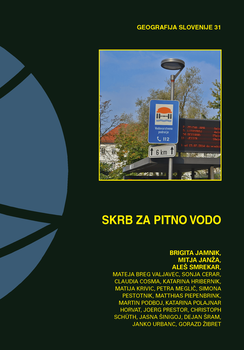Skrb za pitno vodo
Ljubljana's water resources lie in the immediate vicinity of built-up urban areas or even below them. For decades, they have been safeguarded as water-protection areas, which are specified by implementing regulations. However, formal protection through regulations is insufficient if the goal is to manage these sources in a sustainable manner. One of the most important goals of sustainable management is maintaining suitable provision of fresh drinking water without using any technological procedures to
treat it. Ljubljana residents rank this high on the scale of values associated with life in Slovenia's capital. Managing threatened water resources in urban environments requires a comprehensive approach and regular activities for preserving their quality and suitable quantity. The key condition for this is a suitable spatial planning policy, which considers water resources not only as limiting factors of spatial use, but also a modern challenge. The basis for any serious decisions regarding aquifer systems is good
knowledge of their characteristics and keeping abreast of impacts on them, which can only be achieved by carrying out regular studies and monitoring, and certainly not through one-time activities. Modern technology makes it possible to organize these data in a clear and transparent way, and also make them accessible to the general public. Computer tools can be used to simulate systems and thus obtain new findings about the way they function. These are helpful in making long-term decisions or in cases when one must take immediate action, such as during environmental disasters. Planning long-term and short-term resource management activities is necessary because the consequences of wrong decisions can be irreparable and are usually connected with high costs. Appropriate planning requires expert tools that provide reliable, transparent, and quantitative assessments of the actions' effects. Having reliable assessments of the state of affairs and predictions makes decision-makers' jobs easier and facilitates communication between stakeholders. Combining the procedures and results presented in this volume ('Safeguarding Drinking Water') into a system of feasible water resource management in Ljubljana is an achievement that can serve as an example for many similar environments – not only in Slovenia, but also elsewhere. The City of Ljubljana also includes safeguarding water resources among its long-term environmental objectives, in which it emphasizes both the quality and quantity of its water resources. For more than a century, the city has been using safe and fresh drinking water, which has provided a high living standard to its residents. What about their children? Natural water resources are insufficient. Managing these resources requires sustainable and professionally correct decisions, expertise, and experience. The expertise, experience, and requisite tools for making decisions are already provided, which is why the stakeholders believe that sustainable decisions are also possible.
Co-publishers: Javno podjetje Vodovod-Kanalizacija, d. o. o.; Geološki zavod Slovenije
Downloads

Series
License

This work is licensed under a Creative Commons Attribution-NonCommercial-NoDerivatives 4.0 International License.
